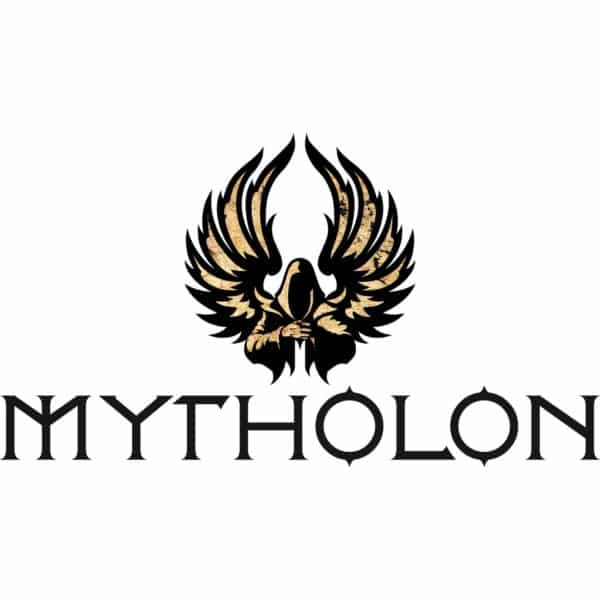As we saw in Part 1, Bohemia had become a tinderbox of religious and political strife, marked by ambitious monarchs and overbearing Churchmen. Into this heady mixture, the Papal authorities threw a tank of gasoline: the execution of Jan Hus, the leading figure of the Bohemian Reformation.
In Part 2, we will watch Bohemia descend into the fires of a religious war, which will spread into to a European conflagration. But like the worst wildfires, the Hussite Crusade cleared the scorched earth for the shoots of new growth. We shall trace the course of this most unique of wars: from the martyrdom of Jan Hus, through to the victory of the Hussites at the end of the First Hussite Crusade, when they found themselves as masters of all Bohemia. We shall see a new, modern form of asymmetric warfare, pioneered by poorly-armed peasants against the richly arrayed knights of European Christendom. But in Part 3, dark clouds loom. Though the Hussites would defeat all comers on the field, nobody would expect the knife of betrayal.
The Tinder Catches Alight
The flames which burnt Jan Hus spread like wildfire in the streets of Prague. Whilst we can only guess at the febrile atmosphere in the streets, we know that the response of the nobility was swift and severe. Fifty-four of Bohemia’s leading nobles put their name to the protestatio Bohemorum (‘the protest of the Bohemians’), which condemned the burning of Hus in the strongest possible language. It went further than just protest, though – it said that the Bohemians’ loyalty to the Pope went only insofar as the Pope was loyal to God, and that the Catholic cardinals had committed a crime against the Almighty in killing Hus. This was an open threat of schism: it renounced Papal legitimacy altogether, effectively branding the Church fathers as sinners and heretics.
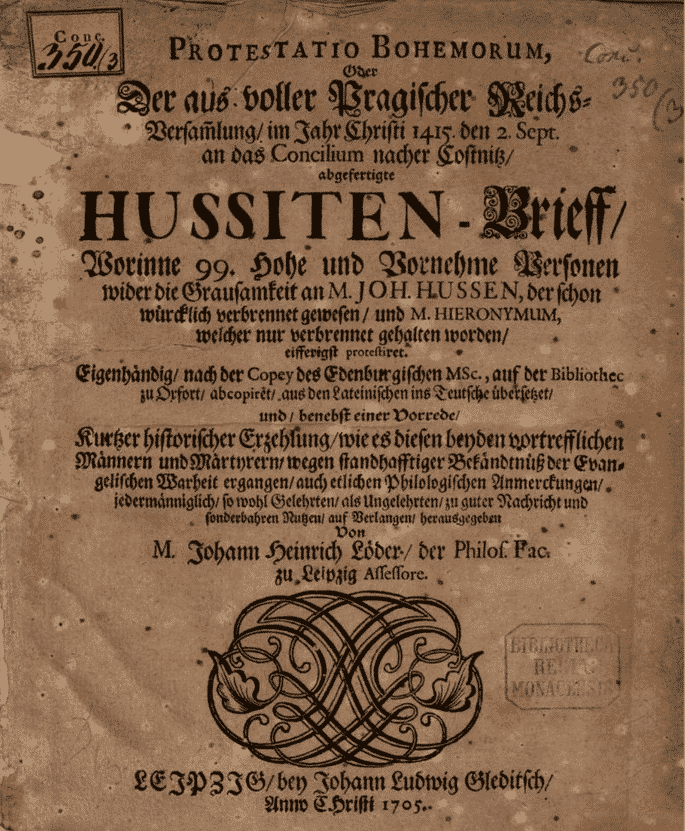
Sigismund’s reponse to the noblemen’s letter was furious: having been convinced by the Papal bishops that Hus was indeed a heretic, Sigismund threatened to drown every Hussite and Wycliffite in Bohemia. Weakly following his younger brother’s lead, the ineffectual King Wencelaus of Bohemia tried to silence the growing rebellion by imprisoning its street-level ringleaders, but this only made things worse: Hussites and commoners responded to these entreaties by trashing Catholic churches and evicting loyalist priests, who had now become symbols of the hatreds built up over the last century, brought to a head by the murder of their beloved Jan Hus. Bohemia was now careering towards the Hussite Crusade.
The most radical Hussites, seeing which way the wind was blowing, left the city of Prague, and founded a settlement at Tábor: these holy radicals would become known as the Taborites, the radical wing of the Hussite cause who wanted a social revolution to create a socially just kingdom under God. The more moderate (but nevertheless staunchly anti-Catholic) Hussites are known as Utraquists. The word comes from sub utraque specie, meaning ‘under both kinds’, referring to the frequent communions of both bread and wine which Hus popularized.
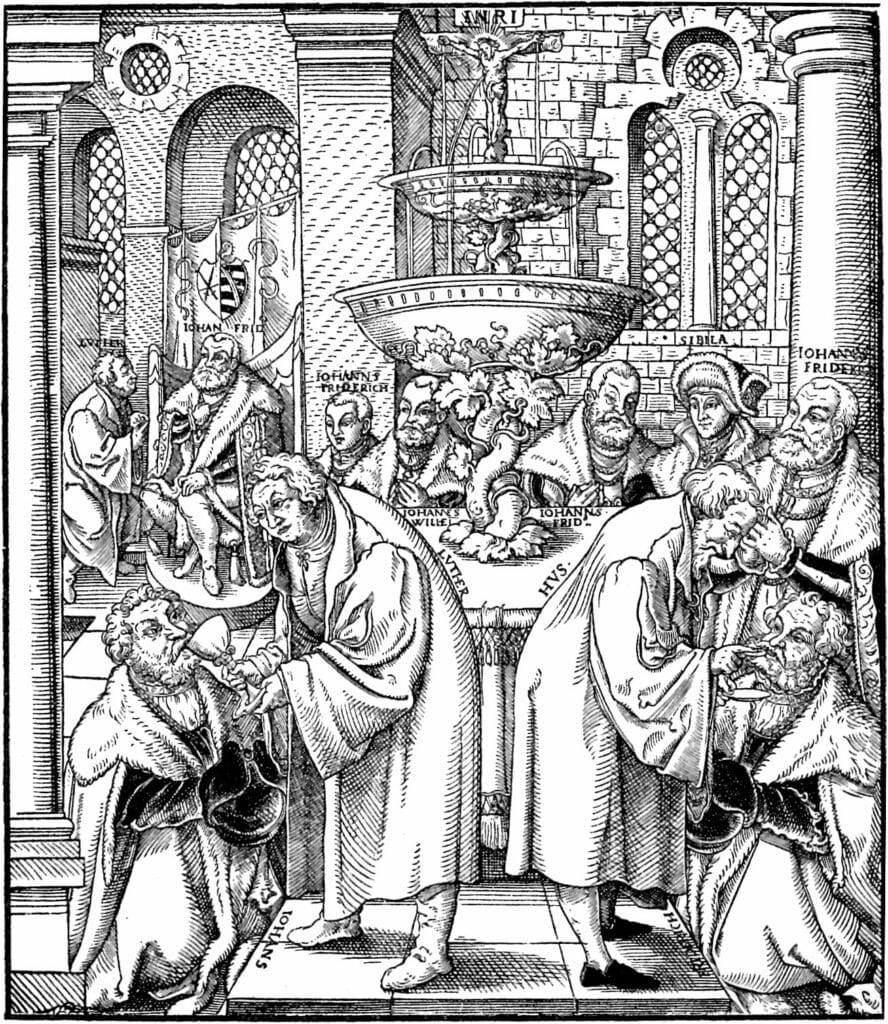
We can run the risk of thinking that the Hussite Crusade was just ‘fighting over some bread and wine’ – but the Hussites’ frequent Eucharists show that they wanted a direct, unmediated relationship with the divine in which the institutions of the Church were secondary. This was in opposition to the Catholic orthodoxy of the time, which said that God was only to be accessed via the powerful and wealthy institution of the Catholic Church itself: the Hussite creed was not merely a spiritual threat, but a direct political one. Though the two factions of Utraquists and Taborites would forge a bond which would stave off the combined might of the rest of Catholic Christendom, its fragmentation after more than a decade of war would spell the end for the radicals in time.
But that is away in the future. Now, we have some aldermen to throw out of a window.
The Defenestrations of Prague
Defenestration (literally, throwing someone out of a window) is a strangely Czech historical meme which appears several times throughout history, signifying a sort of national revolutionary spirit, the very embodiment of rebellious disgust. Most famously, the Thirty Years War was initiated by the defenestration of pro-Habsburg administrators from the windows of Hradčany Castle – but the very first (recorded) defenestration took place in 1419. It too began a European religious war – the First Defenestration of Prague marks the opening of the Hussite Wars.
By the summer of 1419, a sort of Cold War had set in between the pro-Catholic authorities, and the mass of Hussites. A Wycliffite priest named Jan Želivský was leading a protest through the streets of Praguein June of that year, in order to ask for the release of Hussites being held captive by the town authorities – but Želivský was apparently struck by a stone thrown from the window of the Town Hall. Whether this was merely an expression of derision from a disgruntled scrivener in the Hall, or whether it was just a rumor that spread like wildfire, the crowd perceived a direct attack by the authorities upon the Hussites. Enraged, they broke into the Town Hall and sacked it. They seized the town council who were sitting in the hall, and proceeded to throw the burgomaster, the judge and five aldermen from the windows of the Town Hall, dashing them to pieces on the square below.
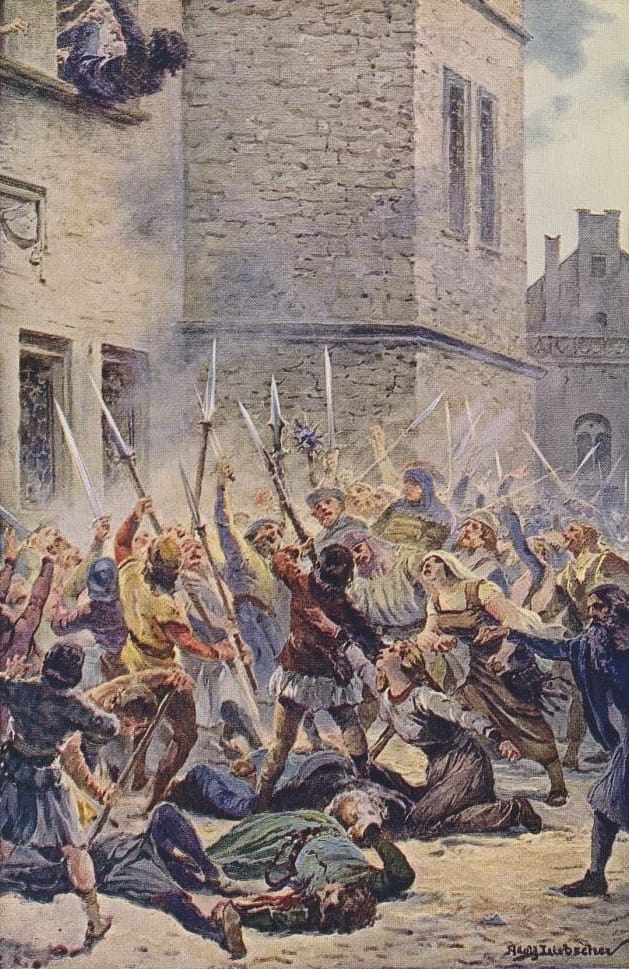
When King Wenceslaus heard of the Defenestrations, popular memory has him dying of shock on the spot. Whilst this is not quite true, there can be little doubt that this act devastated the ailing King, contributing to his death two months later. The unhappy Wenceslaus had no children of his own, and so his crown passed – you guessed it – to his younger brother, Sigismund of Hungary, the man who was popularly labelled as the Judas who had betrayed Jan Hus.
Historians point to this moment where the Hussite Wars began: Hus’s followers had moved from grumbling to determined action, sealed in the blood of the town councillors. If war was likely before the events of summer 1419, by the autumn it was inevitable. The crown of Bohemia was claimed by an implacable enemy of Hussitism who had threatened mass drownings the snuff out the breakaway sect – and the Hussites had crossed the Rubicon by attacking the civil authorities in Prague. The Hussite Wars had begun.
The Rise of Jan Žižka
Initially, the Hussite War looked more like a Bohemian civil war. Sophia of Bavaria, ex-King Wenceslaus’s widowed queen now acting as regent, secured the city of Prague after much fighting with hastily-armed Hussite militias. Conscious that Sigismund would probably attempt to force his claim through a invasion from Hungary, the Hussite nobles agreed to talks with the Hungarian King. But the more radical Hussites (including the Taborites) thought that war with the Hungarians was inevitable, and so moved quickly to secure their position. They were led by a hardened Bohemian knight, a man by the name of Jan Žižka.
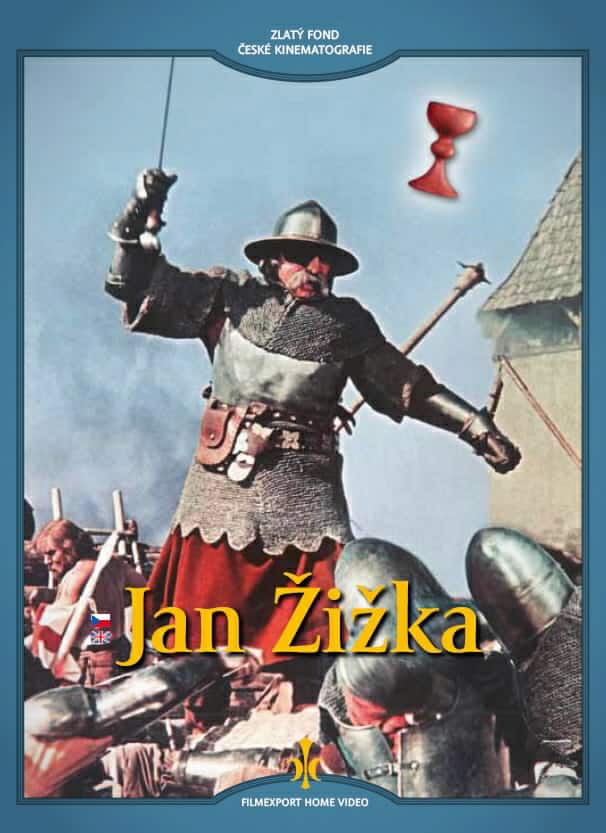
Žižka is more legend than historical figure – historians theorize that he was born in what is now southern Czechia, but beyond that, no accounts of his origins agree and they are much muddied with mythmaking. Somewhere in his late middle-age by the late 1410s, Žižka had been a Chamberlain for Queen Sophia of Bavaria, but he became a pious and committed follower of Jan Hus, rejecting the profane and idolatrous methods of the Catholic Church, in favour of a spare, mystical and ascetic Taborite relationship with the divine. In time Žižka would go on to become a near-unrivalled figure in military history, leading Hussite armies to victory in every single one of his dozens of engagements and losing both eyes to the battlefield – but now, over the winter 1419-1420, Žižka led his followers south and away from the trap presented by Prague. Eventually, Žižka’s small force of less than 500 peasant soldiers found itself hemmed in by more than 2,000 mounted cavalry raised by an array of Catholic nobles on a marshy plain near the town of Sudoměř. Žižka attempted to surrender, but the overconfident nobles, eyeing their five-to-one advantage, refused.
Victory at Sudoměř
The first major battle of the Hussite Wars is a microcosm of what would transpire over the coming decade of war. The Hussites had drawn themselves up in a revolutionary new tactic that would prove to be their secret weapon, time after time: the wagon-fort. When outnumbered, and especially when facing cavalry, the Hussites would create a vozová hradba (‘wagon wall’) or tabor (named for the radical Hussite city) – this was a square fortress of the army’s food and supply wagons, sided with thick wooden planks, chained to one another to create an immovable bloc.
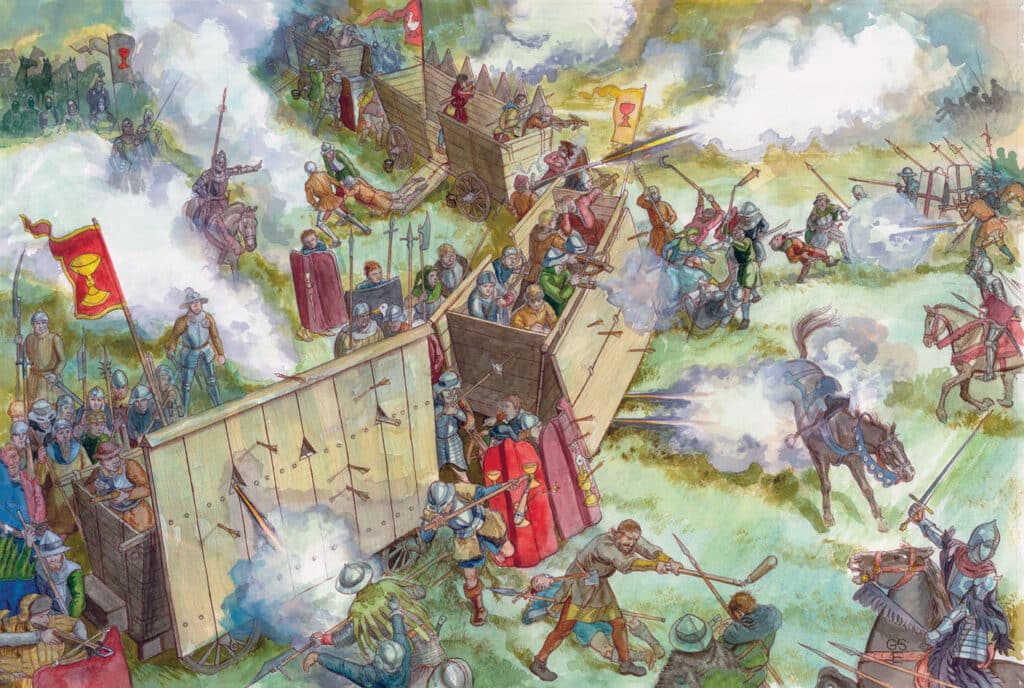
Inside these wooden walls would be placed the Hussites’ other key tactical trump card: arquebusiers. These soldiers, wielding primitive gunpowder firearms, were only in their infancy in other Late Medieval armies, being mixed in with formations of pikemen and swordsmen. In the open and in small numbers, the arquebus was heavy, slow to reload and unwieldy, and it failed to take advantage of its true tactical usefulness. But placed behind the high walls of a wagon fort, arquebusiers could reload their guns in safety, putting out a withering hail of fire against armored and horsed attackers who were unable to respond. When the Hussites’ foes were unhorsed and demoralized, pikemen and flail-wielders would stream out of the wagon fort and spring upon the shattered survivors.
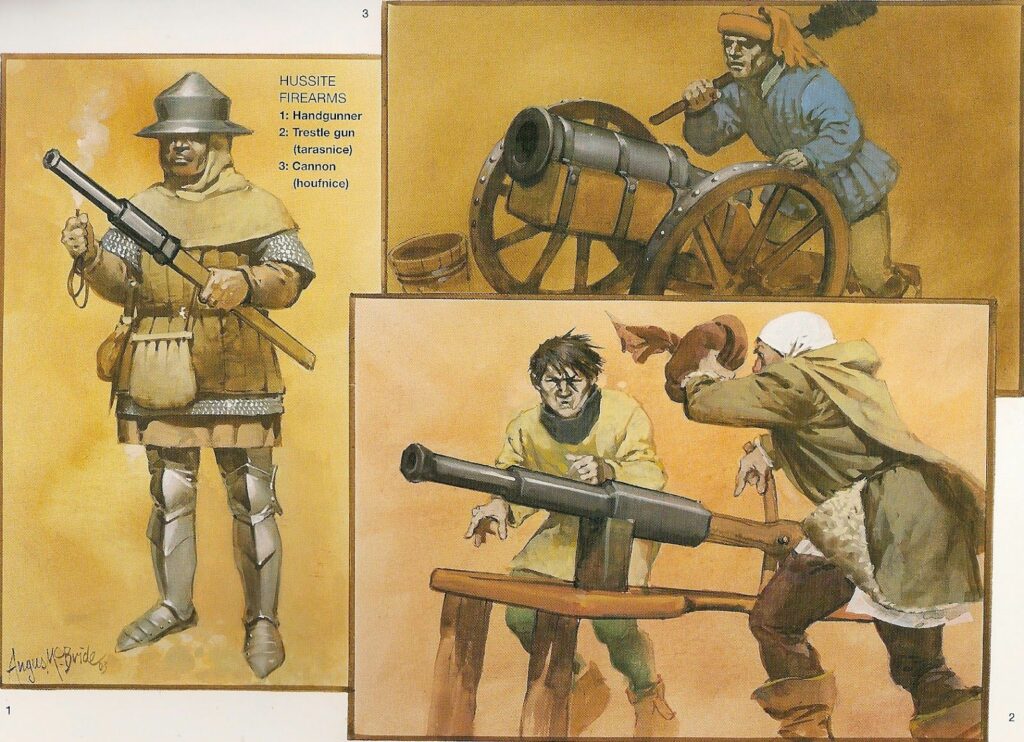
As the wars dragged on, spectacular innovative tactics would be pioneered, including arquebusiers firing from moving wagons in hellish 15th-century drive-by shooting, and positioning houfnice (‘howitzers’, the origin of the English word) within the wagon forts. Thus, by combining the wagon fort and early firearms, the Hussite militias could turn every battle of the Hussite Crusade into a miniature siege: magnifying their numbers of small, poorly equipped and inexperienced commoners into a force capable of standing up to, and indeed of beating, the most well-equipped late-feudal armies of Europe.
At Sudoměř, the Catholic landowners smashed their army to pieces with repeated futile assaults on the Hussite wagon walls, which Žižka had cunningly placed athwart the few roads through the marsh. Hundreds of noble horsemen were killed, including Jindřich of Hradec the local leader of the Knights Hospitaller, whose Crusader knights had joined the effort to put the heretics down. Whilst Žižka’s band had lost many as well, they escaped under the cover of a heavy fog, having spilled much noble blood for every drop of their own. The first pitched battle of the Hussite Wars was a crushing, humiliating defeat for the cream of the Catholic nobility.
From Hussite War to Hussite Crusade
Observing the total failure of his Bohemian co-religionists to annihilate these peasant upstarts, over the border in Hungary, Sigismund was wracked with consternation. Whilst he was doubtless one of the wealthiest and most powerful men in Europe, he was wary of acting without legitimate authority: if he destroyed the Bohemian nobility through arbitrary force of arms, this would set alarm bells ringing for the other nobles of the Holy Roman Empire – it would sink any chance he had at his real goal: the title of Holy Roman Emperor.
Thus, Sigismund devised the perfect pretext for an armed intervention into Bohemia: a Crusade. Not only would this give him the unquestionable legitimacy of the freshly-reunited Papacy, it would also defray his costs somewhat by supplementing his Hungarian and Brandenburgische forces with plunder-hungry volunteers from the rest of Christendom. Sigismund got his wish in March 1420: Pope Martin V issued a papal bull proclaiming a Crusade “for the destruction of the Wycliffites, Hussites and all other heretics in Bohemia”. Invading from Hungary in June, Sigismund’s army was bolstered by the forces of dozens of German nobles. What had begun as a civil war was rapidly spiralling into a regional – if not European – conflict.
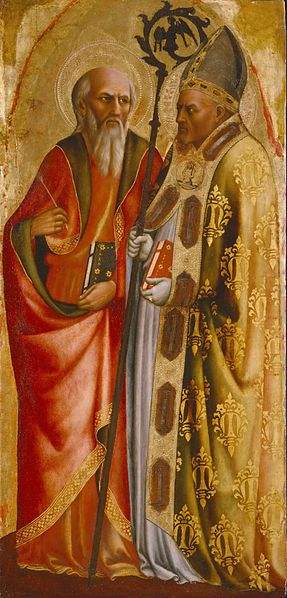
But, faced with the innovative Hussite tactics and near-fanatical levels of morale, the offensive soon stalled. Reaching stalemate in front of the gates of Prague, the Hussites and the Hungarian King negotiated a settlement to the conflict. These negotiations resulted in the most famous definitive statement of the Hussite creed: the Four Articles of Prague (prefiguring Martin Luther’s own Ninty-Five Theses by almost a century). In effect, these affirmed the right of all people free of sin to take the Eucharist ‘under both kinds’, and bound the priesthood to vows of poverty. But ultimately, they rejected the primacy of the Pope as the prime arbiter of God’s word on earth – and so Sigismund could not countenance them. Anything less than uncompromising war against the Hussites would be tantamount to admitting that Hus was did not deserve to die – and that Sigismund’s own land-grab in Bohemia was unjustifiable.
Fighting raged back and forth across Bohemia between the Hussite wagon forts and the chivalric armies of the Crusaders. But the tactics of the Hussite armed citizenry were simply of a different league to those of the Medieval knights. Victorious at Vitkov Hill and Vyšehrad, the Hussites gradually bottled up Sigismund into a handful of castles. A relieving Crusader army was crushed, and thus the Crusaders’ last remaining footholds in Bohemia were dislodged. The Hussites were masters of all Bohemia.
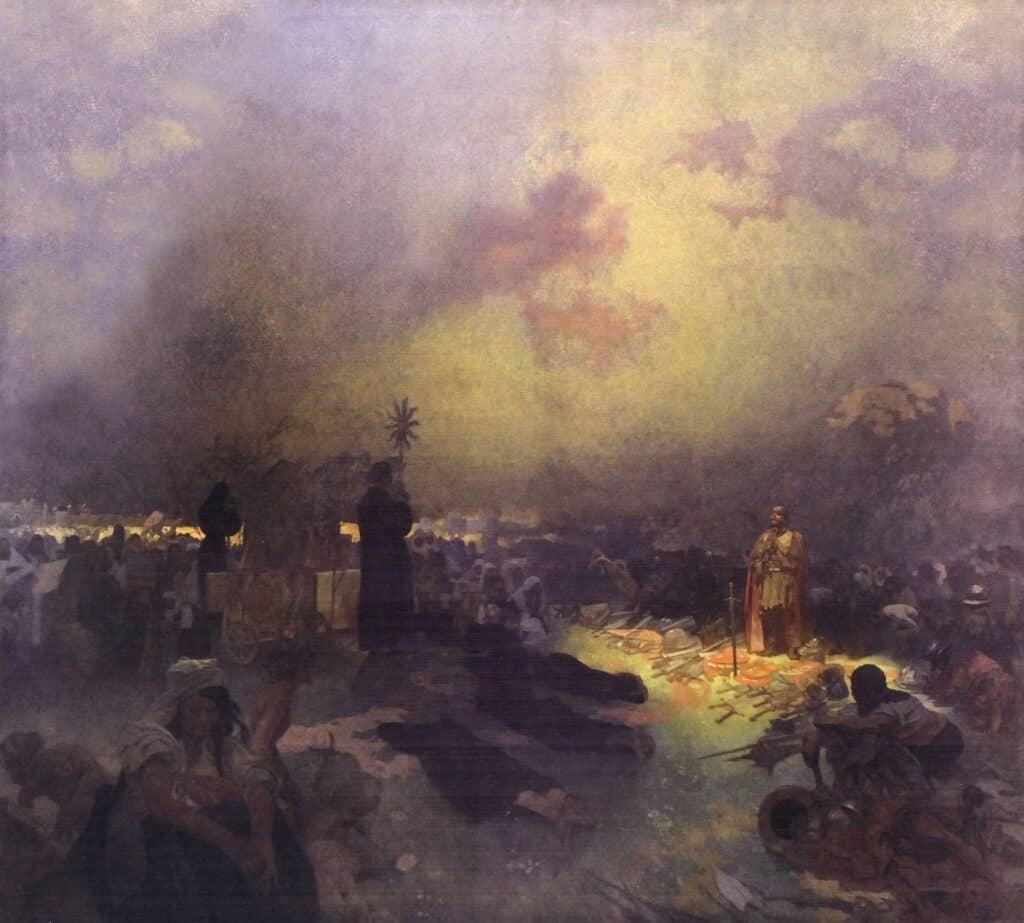
Whilst the end of the First Hussite Crusade was an abject humiliation for Sigismund and his Papal army, it certainly didn’t end the Hussite Wars. Sigismund would soon lose the taste for fruitless and expensive wars to secure a crown so far from his reach, but the Crusade against the Hussites had already taken on a life of its own. As we shall see in the epic conclusion of our series on the Hussite Wars, the Papal authorities would declare four further Crusades into Bohemia. But each time, the superior zeal, tactical genius and technological ingenuity of the Hussite militias would outclass the cream of the Old World time and time again. But, despite the unparalleled military achievements of the Hussite masses, they were brought low by a most terrible betrayal. In the concluding Part 3, we shall see defeat in victory, and victory in defeat.

 Historical Swords
Historical Swords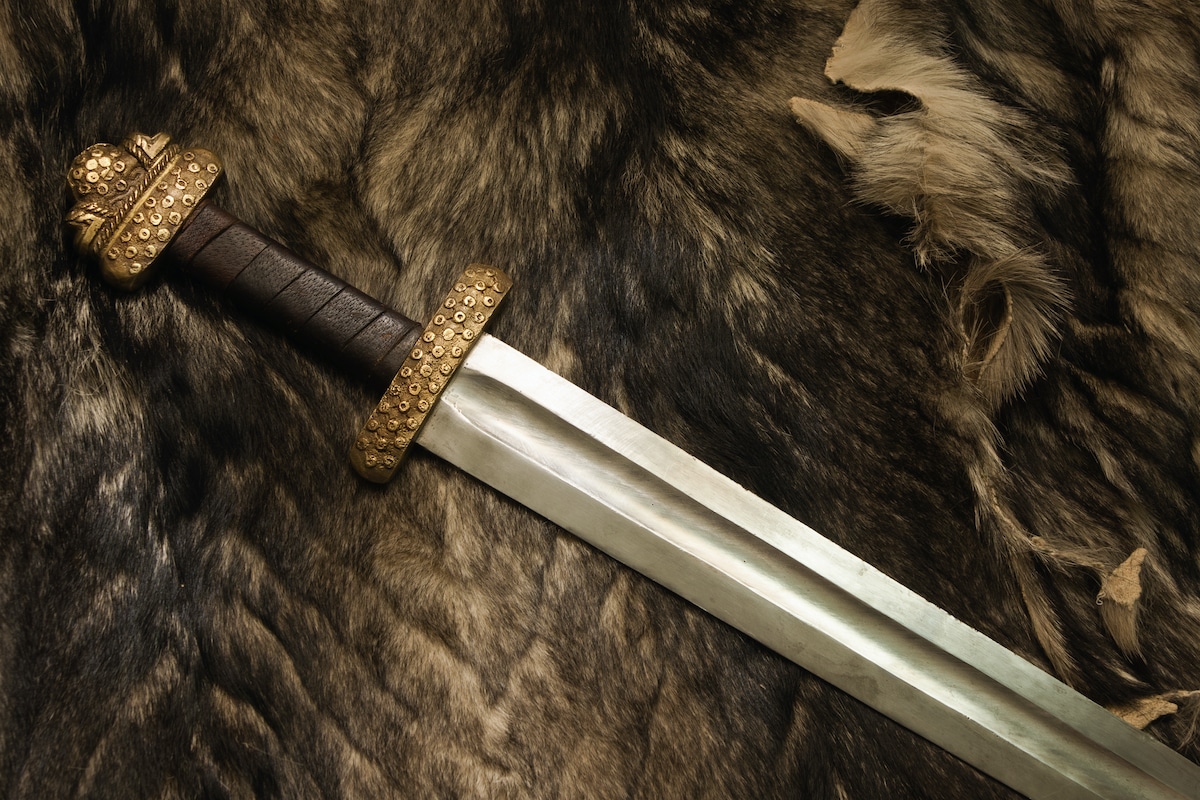 Norse & Viking Swords
Norse & Viking Swords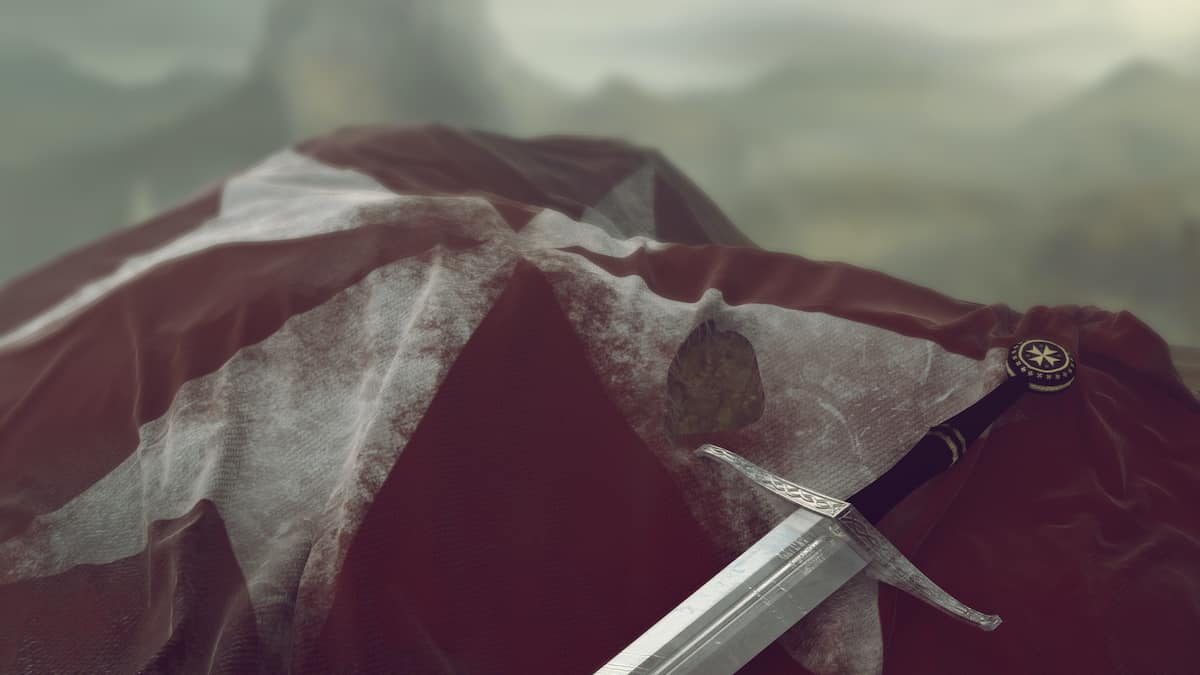 Templar Swords
Templar Swords Claymore Swords
Claymore Swords Fantasy Swords
Fantasy Swords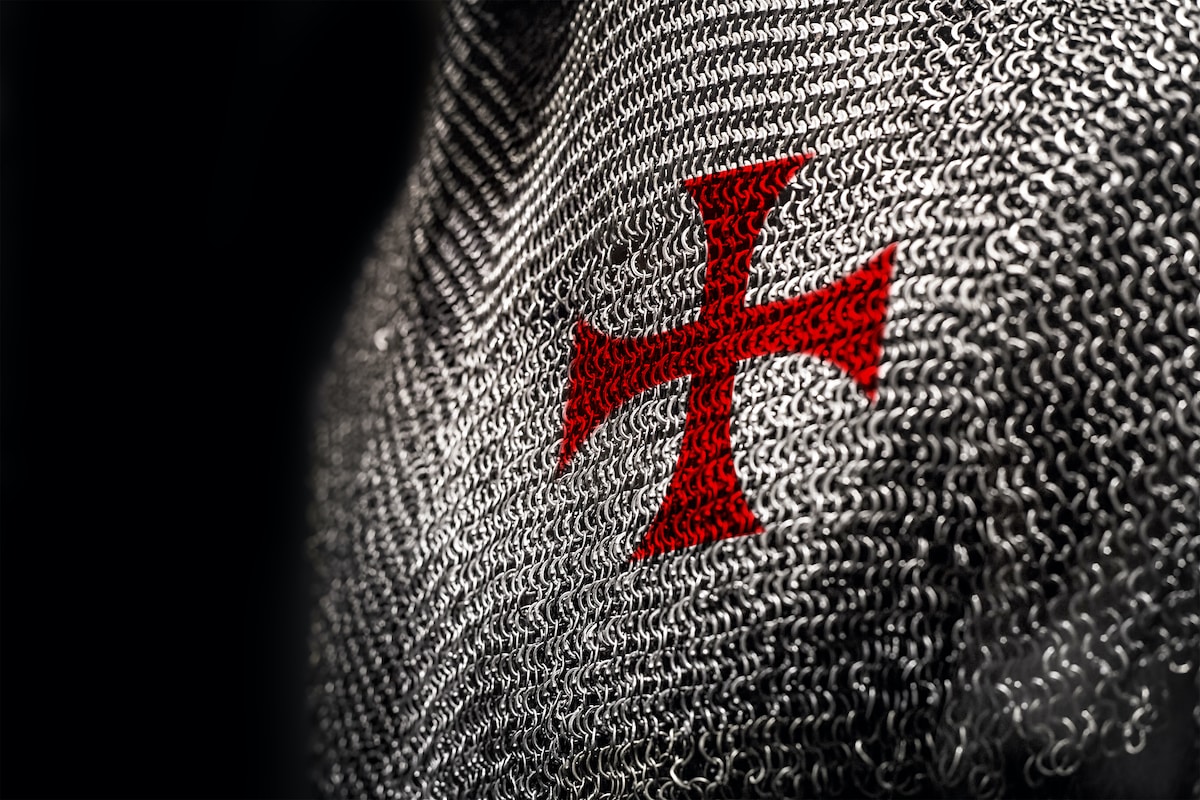 Chainmail
Chainmail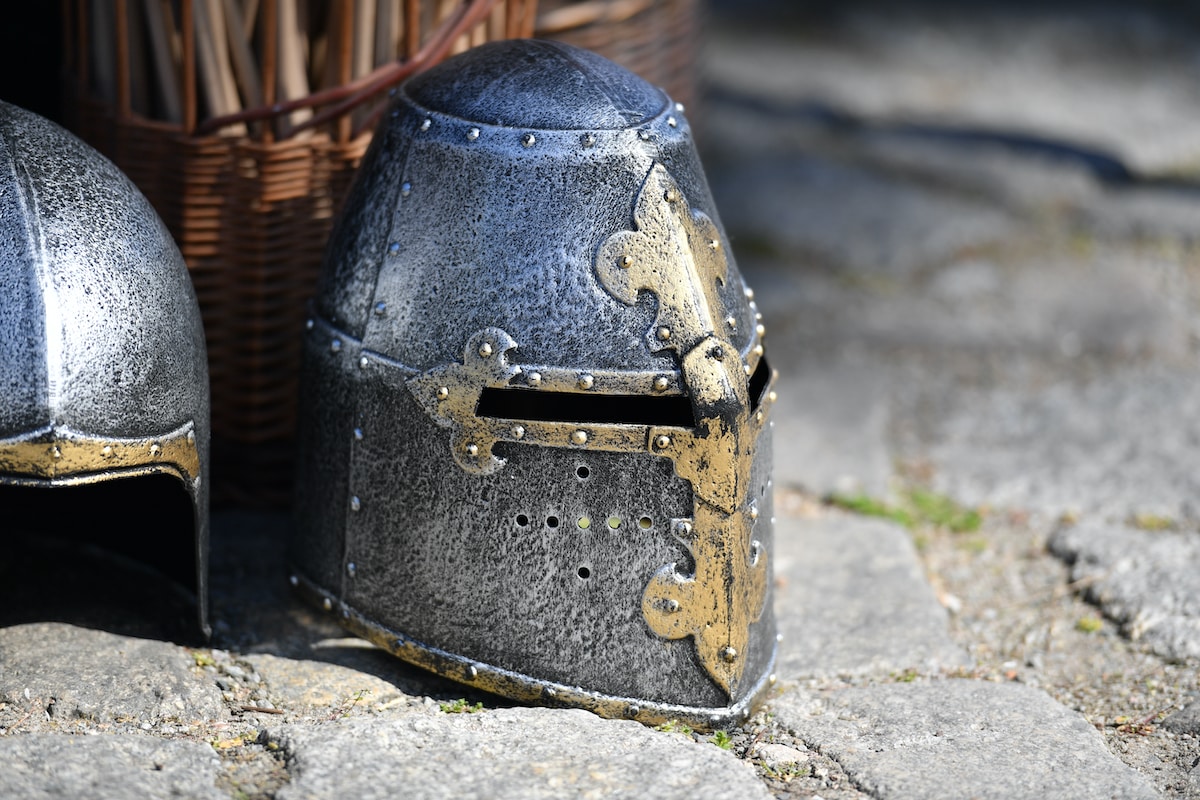 Helmets
Helmets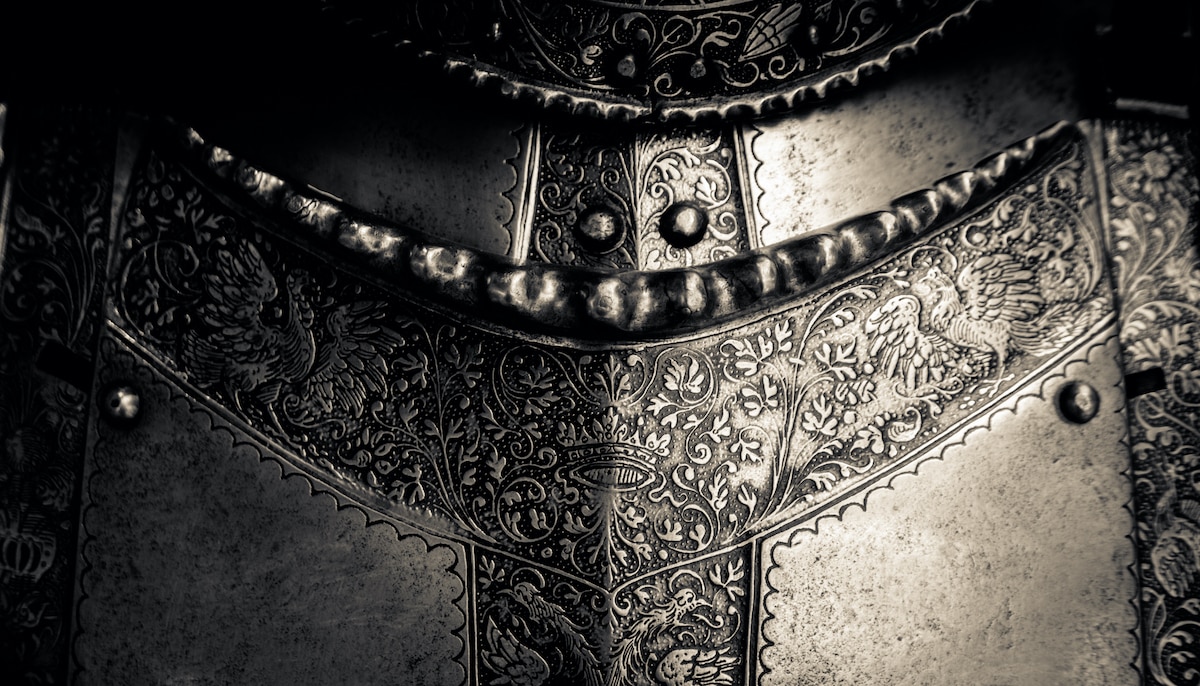 Torso Armor
Torso Armor Bracers and Arm Protection
Bracers and Arm Protection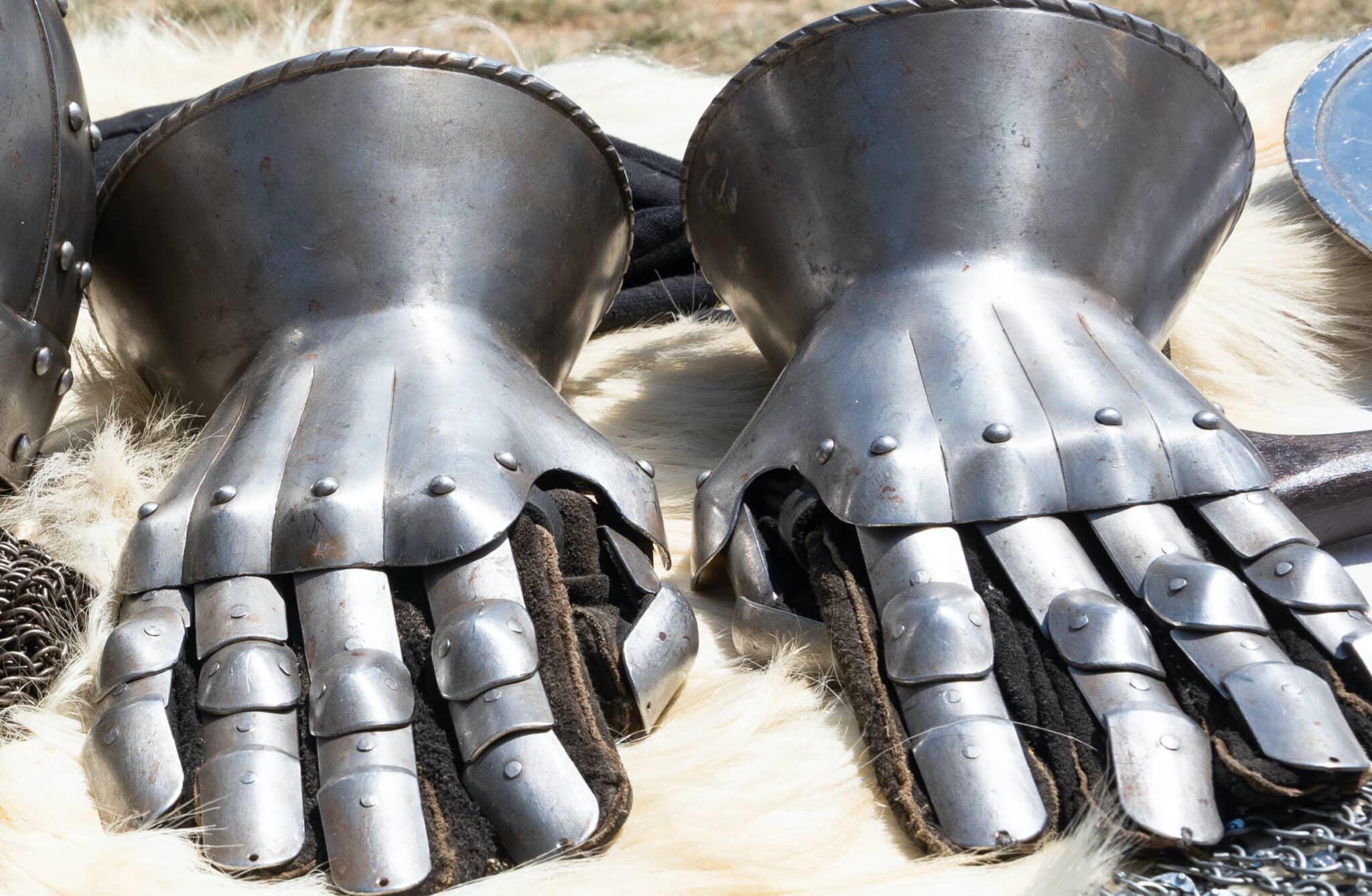 Gauntlets
Gauntlets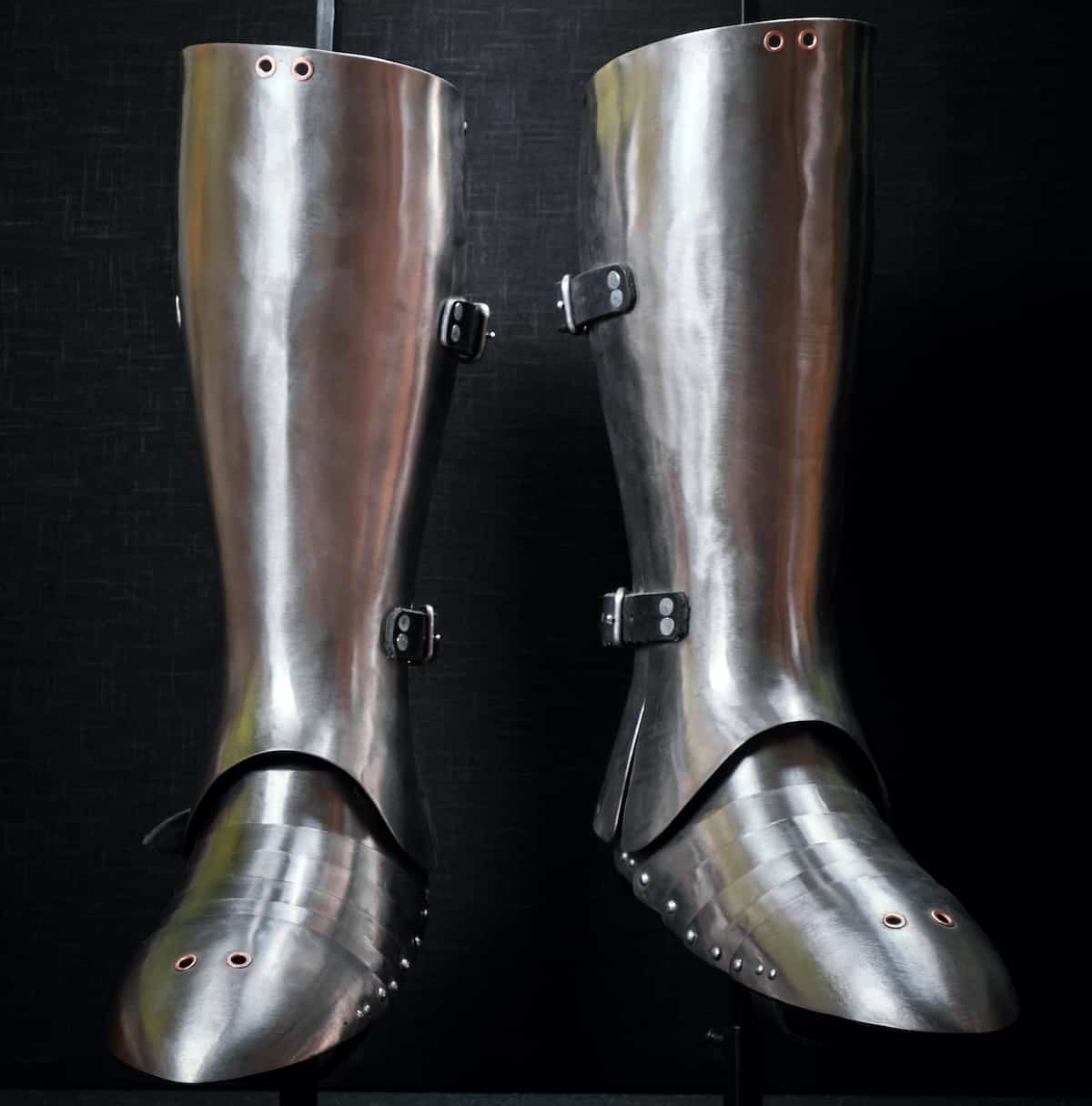 Leg Armor
Leg Armor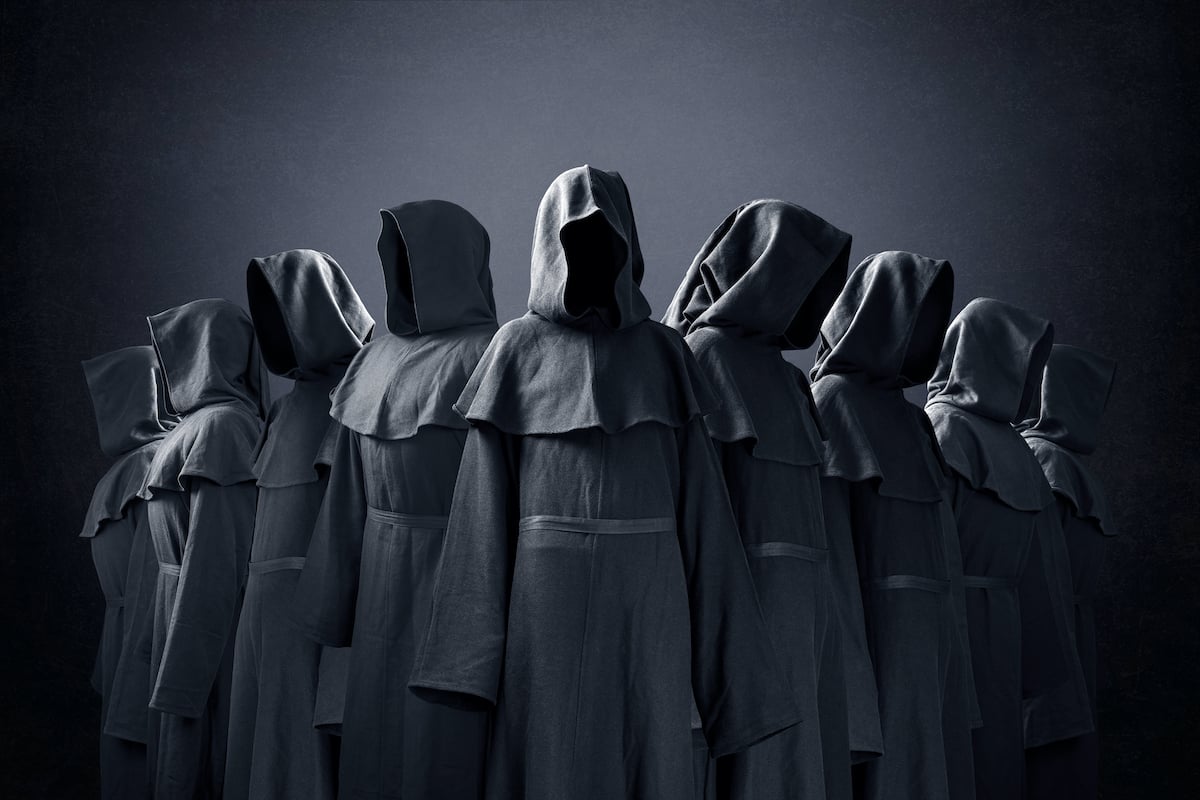 Cloaks
Cloaks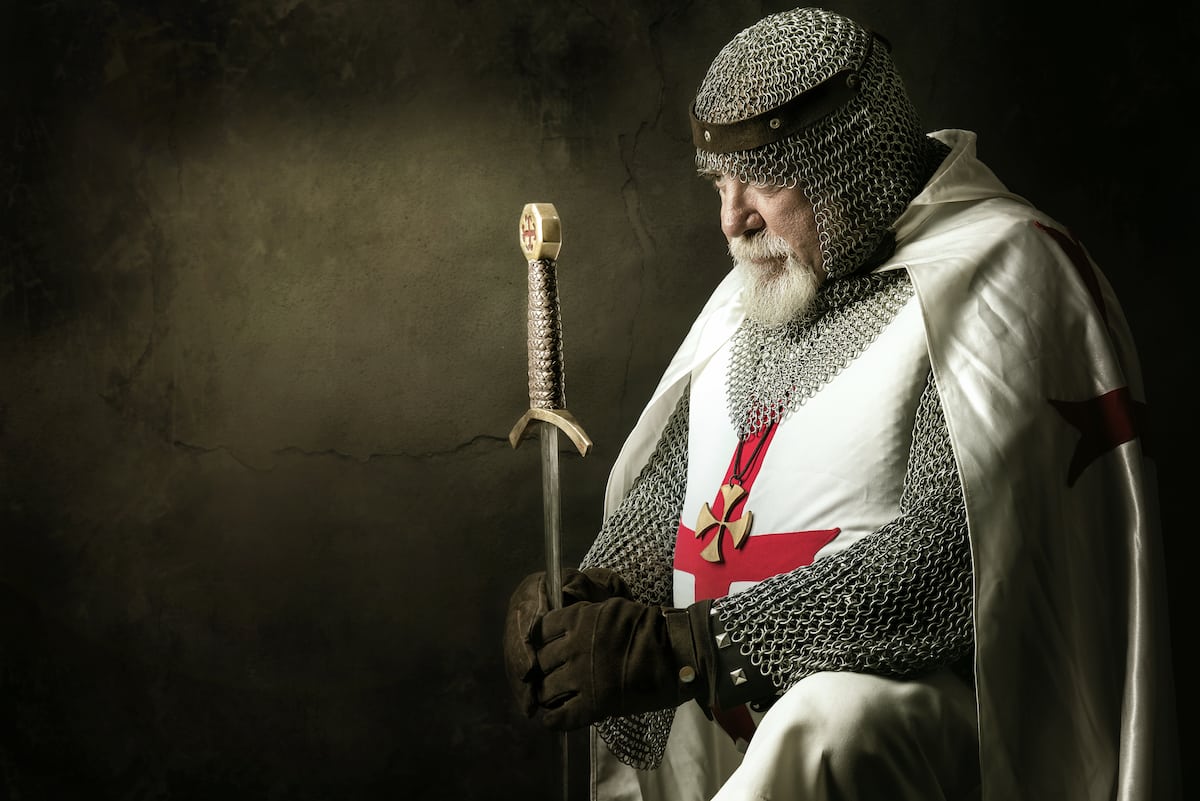 Tabards
Tabards Shirts
Shirts Tunics
Tunics Dresses
Dresses Pants
Pants Gloves
Gloves Belts
Belts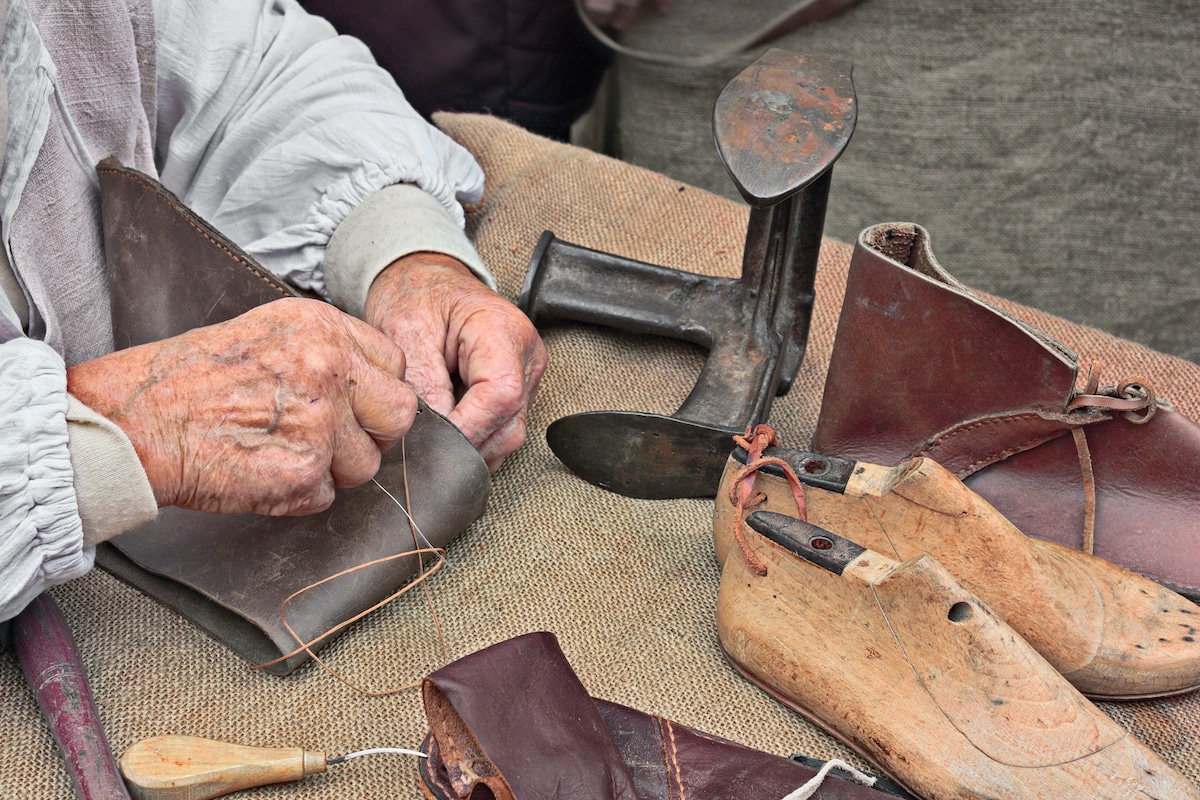 Shoes
Shoes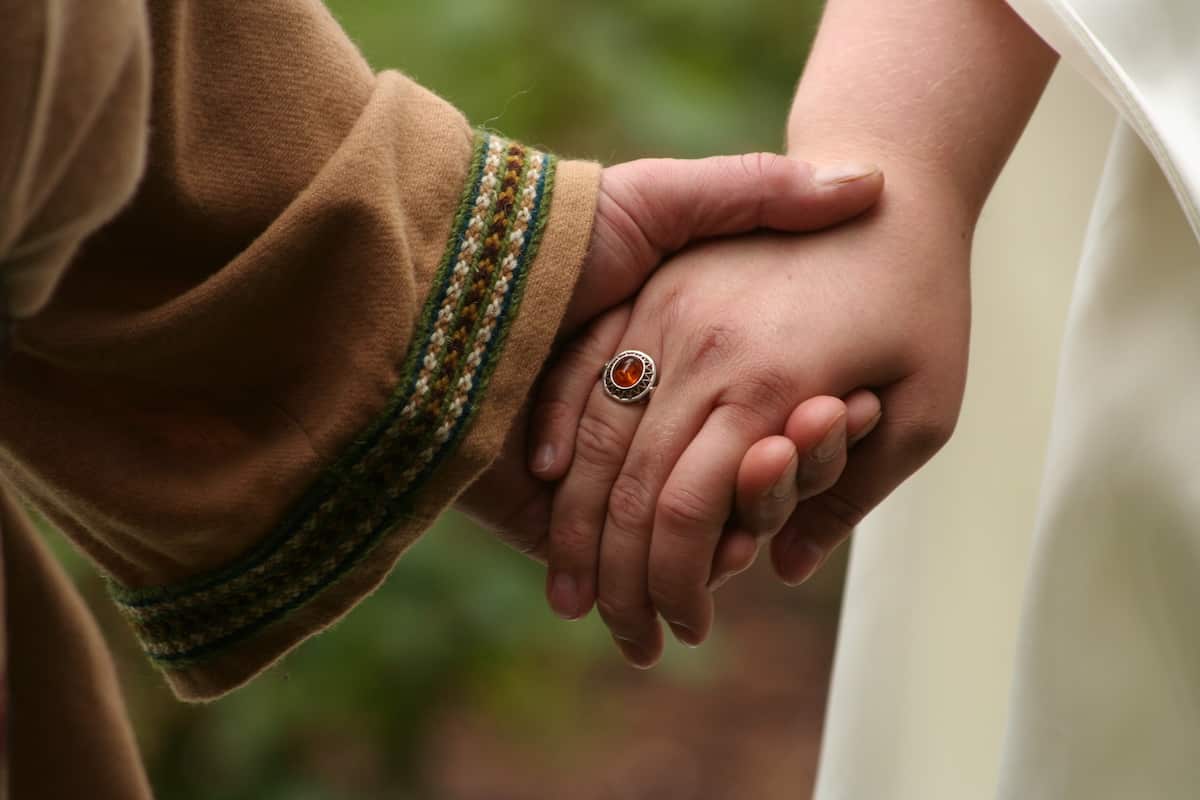 Rings
Rings Necklaces & Pendants
Necklaces & Pendants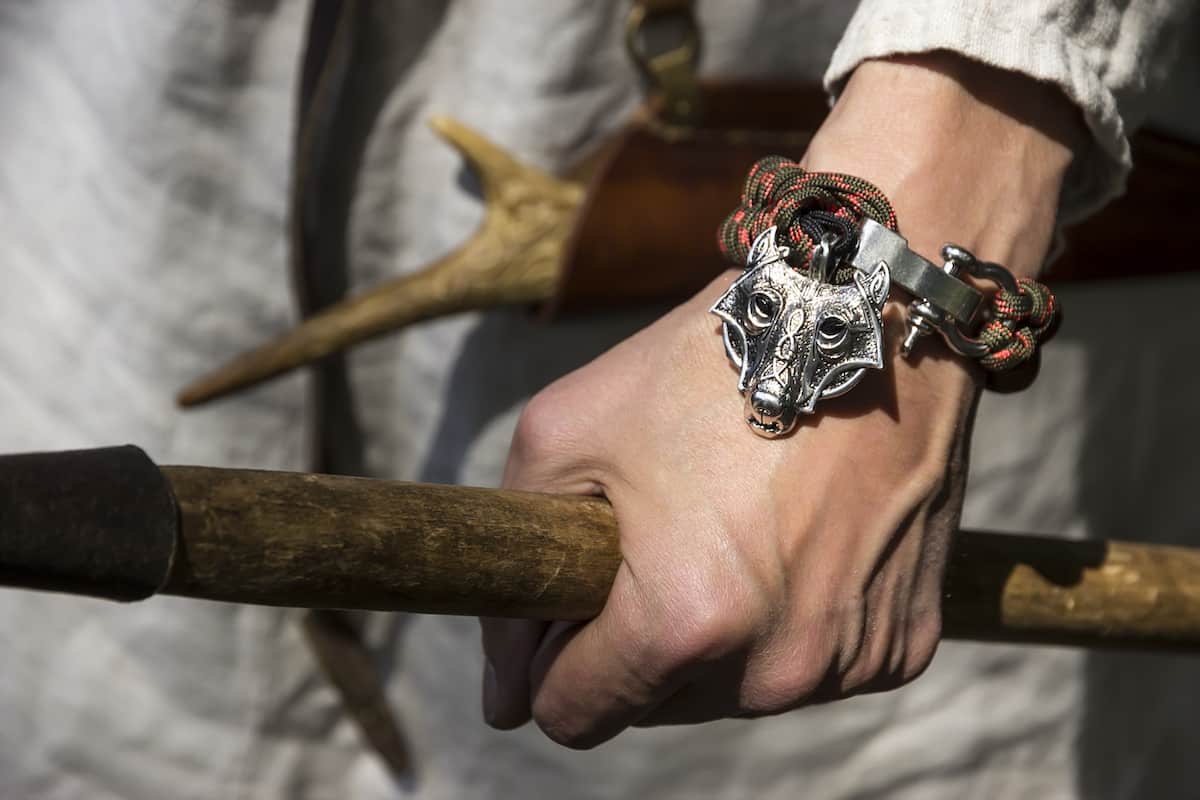 Bracelets
Bracelets